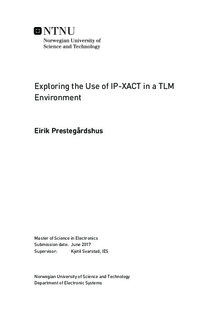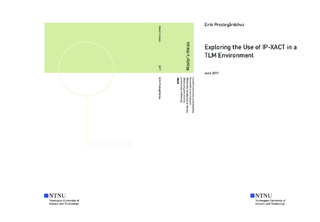| dc.description.abstract | As both semiconductor technology and industry evolves, the need for robust methodologies and efficient design flows becomes more and more important. This thesis investigates IP-XACT, which is a standard that describes metadata of electronic systems aimed at computer-aided designs. The thesis emphasises methodologies of IP-XACT, as well as the overall structure and execution of said methodologies.
The thesis carries out an experiment where IP-XACT is used with transactional-level modelling (TLM). The experiment emphasises methodologies, implementation and structure of the standard. IP-XACT fully accomplishes to describe a component s metadata, and additionally serve as very valuable to the entire design flow and as a back-end metadata organisation. Study and experimentation show the methodologies and core metadata description to be strong concepts, but criticise lacking vendor neutrality and an unintuitive mixed-model structure. To solve the discovered weaknesses, the thesis proposes an alternative model that restructure elements that describe information specific to models (like TLM).
IP-XACT is ready to be used in the design flow, but is still a subject of development, thus feedback can prove very valuable for future versions. IP-XACT seemingly has a positive future to come, especially with the industry being more reliant on computer-aided design flows to achieve higher levels of efficiency. | |

